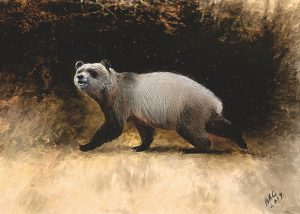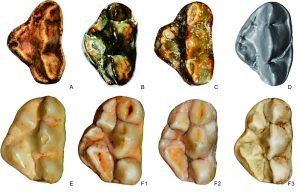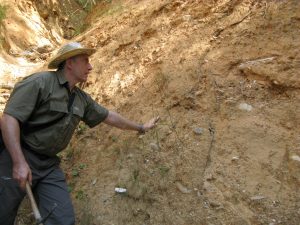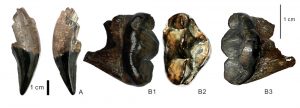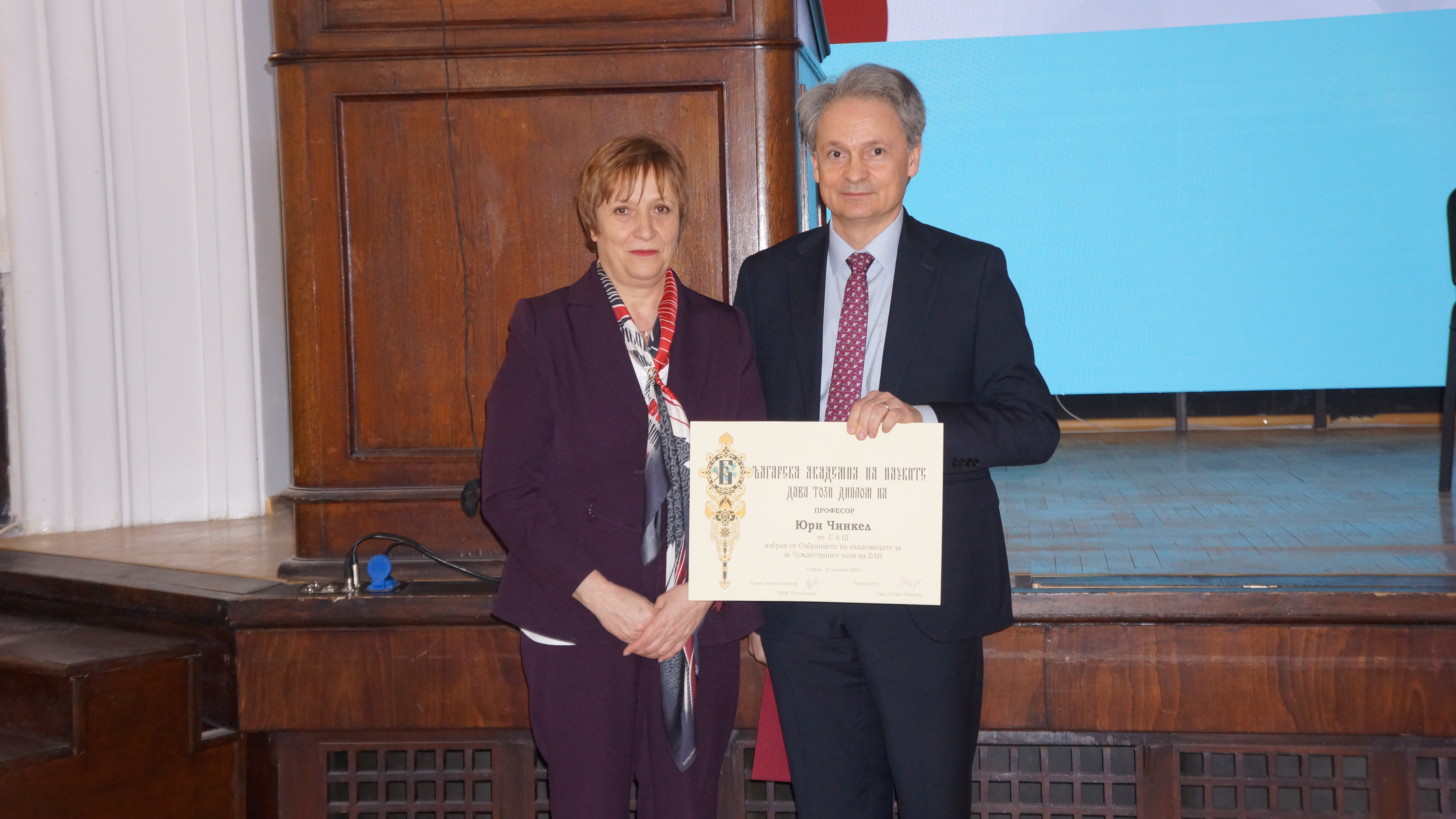In the article „A late Turolian giant panda from Bulgaria and the early evolution and dispersal of the panda lineage“ published in the Journal of Vertebrate Paleontology, Prof. Nikolai Spassov from the National Museum of Natural History of BAS and his Chinese colleague Qigao Jiangzuo describe a new species of fossil giant panda (Agriarctos nikolovi) that inhabited Bulgaria about 6 million years ago, at the end of the Miocene. The description of the species is based on the finding of fossil teeth stored in the collection of NMNHS – BAS.
The evolution of the panda is poorly known due to very limited fossil remains. It is assumed that the direct ancestor of today’s panda is the fossil Chinese genus Ailuraerctos which lived 8-6 million years ago. It seems strange at first, but the first, primitive representatives of the panda group (Ailuropodini) were found in Europe. The Bulgarian panda is the latest European representative and the most evolved, in some respects more evolved than the Chinese genus mentioned. However, the authors assume, based on details in tooth morphology, that the Balkan species is representative of a lateral, coexisting evolutionary lineage. The authors do not rule out the possibility that Central and Southeast Asia was the region where the pandas originated as a group but it is more likely, according to the evidence for more numerous and earlier European remains, that the pandas had a European origin before they migrated to the Asian continent where conditions for their existence persisted. Giant pandas are more specialized than other bears in terms of plant food. All pandas seem to have inhabited moist forests.
Remains of the Bulgarian species show that they fossilized in coal deposits existing in the area of Ognyanovo village, Elin Pelin region, which is an indication that its habitat was also associated with moist, swampy forests. In stature, the new species Agriarctos nikolovi was almost as large as the modern panda which can reach 150 kg, and its canine teeth were proportionally even larger, probably because of strong competition with other predators, the scientists suggest. The extinction of the species was probably due to the severe drought known in the Mediterranean as the “Messinian Salinity crisis” the maximum phase of which was about 5.6 million years ago.
The new species, Agriarctos nikolovi, is named after Assoc. Prof. Ivan Nikolov, curator of the paleontological collection of NMNHS – BAS in the 1970s, who has preserved the find in the museum and has made significant contributions to Bulgarian paleontology.
“I decided to name this new species for science after Assoc. Prof. Ivan Nikolov, who was the curator of the paleontological collection of NMNHS – BAS before me – says prof. Spassov. Assoc. Prof. Nikolov received or found the find probably in the 70s and since then it has been kept in the museum. I saw the two teeth for the first time in the early 80s, after the death of I. Nikolov, when I was doing my entrée in paleontology and next to them there was only a hastily hand-scrawled note, apparently with the name of the locality. It took me many years before I could find out, with the help of a graphologist, what the note said. Then I had to figure out what was behind the name Gyuredzhia – namely, that it was the old name of today’s village of Ognyanovo near the town of Elin Pelin. Thus I already had an orientation of where the find was from and what age were the coal deposits in which these two teeth were found.”
The giant panda (Ailuropoda melanoleuca) is the only present-day representative of this specialized group of bears. Pandas inhabit a small area of Sichuan Province in China and live in mountainous, forest habitats, feeding virtually exclusively on bamboo. The unique specialization limiting this large mammal’s current habitat has placed the panda on the World Red List as a species vulnerable to anthropogenic activities. With its spectacular coloration and humanly “cute” appearance, it is also widely known as a symbol of global nature protection, a favorite of children and adults alike.
Qigao Jiangzuo & Nikolai Spassov (2022): A late Turolian giant panda from Bulgaria and the early evolution and dispersal of the panda lineage, Journal of Vertebrate Paleontology, DOI: 10.1080/02724634.2021.2054718


